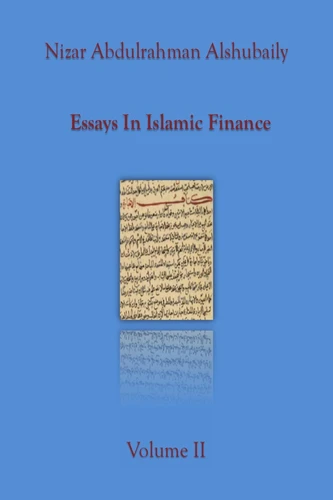Essays In Islamic Finance. Essays In Islamic Finance, #2
Par :Formats :
Disponible dans votre compte client Decitre ou Furet du Nord dès validation de votre commande. Le format ePub est :
- Compatible avec une lecture sur My Vivlio (smartphone, tablette, ordinateur)
- Compatible avec une lecture sur liseuses Vivlio
- Pour les liseuses autres que Vivlio, vous devez utiliser le logiciel Adobe Digital Edition. Non compatible avec la lecture sur les liseuses Kindle, Remarkable et Sony
 , qui est-ce ?
, qui est-ce ?Notre partenaire de plateforme de lecture numérique où vous retrouverez l'ensemble de vos ebooks gratuitement
Pour en savoir plus sur nos ebooks, consultez notre aide en ligne ici
- FormatePub
- ISBN8201688363
- EAN9798201688363
- Date de parution22/06/2021
- Protection num.pas de protection
- Infos supplémentairesepub
- ÉditeurJL
Résumé
This second volume of the series "Essays In Islamic Finance" investigates numerous topics related to the Islamic Banking industry. What are some of the historical examples of Maqasid Al-Shari'ah in financial transactions?Is Islamic Finance really a profit and loss sharing system? Is there any evidence that there is any juridical preference of equity over debt?How beneficial are the AAOIFI Shari'ah Standards?How close are our modern scholars following our classical scholars?Where is the Islamic Banking market growing the fastest, and what is the evidence that it is much larger than reported?Is there any truth to the critics' claims that transparency is lacking within the industry?
This second volume of the series "Essays In Islamic Finance" investigates numerous topics related to the Islamic Banking industry. What are some of the historical examples of Maqasid Al-Shari'ah in financial transactions?Is Islamic Finance really a profit and loss sharing system? Is there any evidence that there is any juridical preference of equity over debt?How beneficial are the AAOIFI Shari'ah Standards?How close are our modern scholars following our classical scholars?Where is the Islamic Banking market growing the fastest, and what is the evidence that it is much larger than reported?Is there any truth to the critics' claims that transparency is lacking within the industry?












